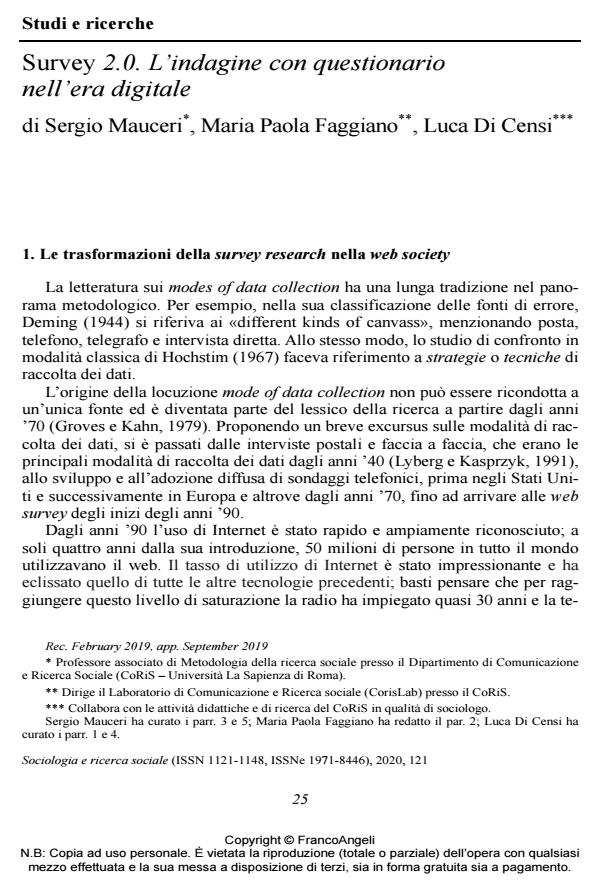Survey 2.0. Survey research in the digital age
Journal title SOCIOLOGIA E RICERCA SOCIALE
Author/s Sergio Mauceri, Maria Paola Faggiano, Luca Di Censi
Publishing Year 2020 Issue 2020/121
Language Italian Pages 24 P. 25-48 File size 256 KB
DOI 10.3280/SR2020-121002
DOI is like a bar code for intellectual property: to have more infomation
click here
Below, you can see the article first page
If you want to buy this article in PDF format, you can do it, following the instructions to buy download credits

FrancoAngeli is member of Publishers International Linking Association, Inc (PILA), a not-for-profit association which run the CrossRef service enabling links to and from online scholarly content.
In addition to evaluating the advantages and limits of the web survey, the authors present three particularly fruitful empirical studies, with different research designs. The studies all investigate complex social problems: an open web survey on voting intentions, an e-mail survey on the quality of university life, and a closed web survey conducted in delimited contexts on technology addiction. On the basis of these research experiences, the authors reach stimulating conclusions regarding integration strategies in the web survey design, which can be adopted in succession or concurrently: a) mixed-modes of data collection; b) Mixed Methods Research; c) inclusion of a preliminary pilot study; d) multilevel survey.
Sergio Mauceri, Maria Paola Faggiano, Luca Di Censi, Survey 2.0. L’indagine con questionario nell’era digitale in "SOCIOLOGIA E RICERCA SOCIALE " 121/2020, pp 25-48, DOI: 10.3280/SR2020-121002